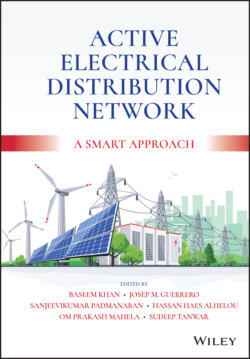Читать книгу Active Electrical Distribution Network - Группа авторов - Страница 23
1.4.1 Description of the Novel Business Model
ОглавлениеThe power distribution function comprises two major activities, namely distribution network creation and retailing [10]. The development of an electricity distribution infrastructure capable of meeting the present as well as the future demand by the consumer is one of the most valuable assets but is very high capital intensive in almost every nation. After the infrastructure has been developed, increasing power quality, reliability, cost effectiveness, etc., create a demand for various ancillary services that impose various additional infrastructures in addition to the basic distribution infrastructure. For example, metering, communication, IT, controllers, protection infrastructure, etc., impose ancillary needs by the distribution sector. This again adds a huge capital requirement for the distribution infrastructure development. The huge capital required for this development is quite difficult for a government owned distribution company or a private distribution company to invest alone. Hence, outsourcing and partnership can be adopted as a possible solution toward capital mobilization for infrastructural development in the distribution sector.
The novel business model proposed [6] is shown in Figure 1.5. In this model of power distribution, various major tasks of power distribution have been proposed to be carried out through outsourcing. The PPP model, build–own–operate–transfer (BOOT) model, or Opex/Totex model has been adopted as the mode of outsourcing. The total structure of the power distribution business has been divided into three segments, viz. the physical infrastructure unit (PIU), the distribution management and maintenance unit (DMMU), and the control–operation–revenue management unit (CORMU). The following sections describes the various segments along with their functions.
Figure 1.5 Nobel business model for power distribution.
